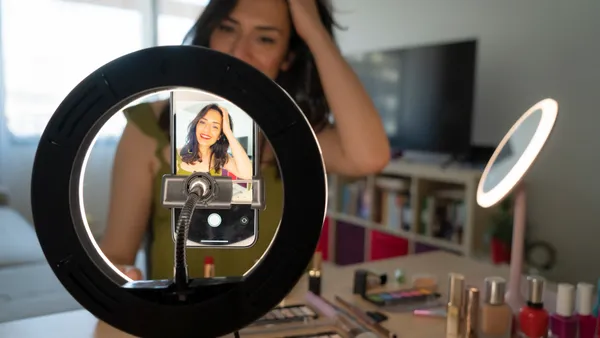Brief:
- Google is expanding the features of its voice-powered Assistant as the search giant vies with other tech companies for dominance in the market for smart home appliances. It announced that more than 500 million people worldwide use its virtual assistant, which works on more than 1 billion devices including smartphones, per a blog post timed with this year's Consumer Electronics Show (CES).
- Assistant this year will get a new feature called Scheduled Actions that lets people preset their smart home electronics like coffee makers, lighting and thermostats. GE, Philips, Moen, D-Link, August, Meross, Somfy, Viaroom and Yeelight are among the makers of smart home products that will work with the scheduling feature.
- Google also previewed a planned upgrade that gives Assistant more emotional range while reading long-form texts including news articles, blogs and short stories on the web. The goal is to make Assistant sound less robotic and monotonous. Eventually, users will be able to say, "Hey Google, read it" while looking at text on an Android device and request a translation into 42 languages. Google also expanded the Assistant privacy settings to give people more control over their personal data and added a "household notes" feature for families to create virtual sticky notes on smart displays within their homes.
Insight:
Google's expanded voice features aim to make Assistant more useful to consumers, a key goal as voice commerce and the market for smart home appliances swell. Features like Scheduled Actions, text reading, household notes and privacy controls may give some consumers more reasons to use Assistant instead of Apple's Siri or Amazon Alexa, the biggest rivals in voice technology.
The global market for smart home appliances will quintuple to more than $192 billion by 2023 from $41 billion in 2018, researcher IHS Markit forecast, pointing to significant room for tech companies' growth.
Google wants to get Assistant on as many devices as possible to outflank Apple and Amazon. Google said Assistant will soon be available on smart displays, speakers, headphones and soundbars from Acer, Belkin, JBL, Lenovo, Philips, LG and others. Google updated Android TV to help electronics makers add more advanced microphones to their TVs, including the newest models from Hisense and TCL in the U.S. Assistant also is being built into Volvo's first electric car, while BMW recently announced wireless Android Auto support as tech companies vie for a slice of the growing connected car market.
Similarly, Amazon is focusing on in-car services at this year's CES to let drivers use Alexa to control their smart home appliances, get navigation help and handle tasks like paying for gas while they're on the road. Amazon and ExxonMobil announced a partnership that in April will let drivers use voice commands to pay for gas at more than 11,500 Exxon and Mobil gas stations in the U.S. By working with more navigation companies, Amazon is taking direct aim at Google Maps and social navigation app Waze, which also is owned by Google.
Despite the competition, Amazon, Apple and Google last month came together in the Zigbee Alliance — which includes Samsung and Chinese device maker Wulian — in a rare collaboration to make smart home gadgets easier for people to use. The move was a sign that the tech giants recognize the market potential for voice-powered Internet of Things (IoT) devices. Their "Connected Home over IP" project aims to create a technical standard that electronics makers can use to design their gadgets to be compatible with other brands' smart home and voice services. The project will build on internet technology so that smart home devices can connect with mobile apps and cloud services.












